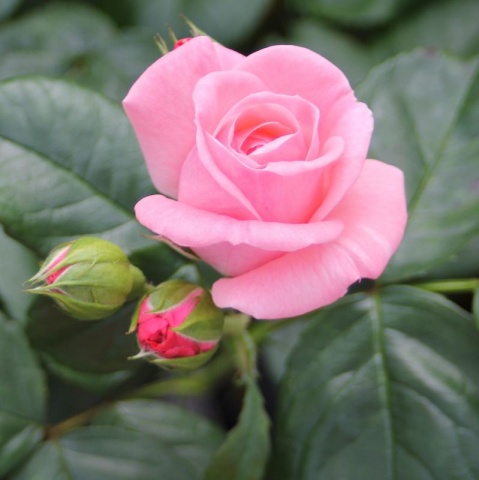
It’s June, and the new month calls for a new birth flower! This month, we’re talking about quite possibly the most popular flower in the world…that’s right, the rose! This beautiful bloom is an international fan favourite, but how much do you actually know about this fab flower? Let’s ruffle through the petals of history together!
The rose itself is ancient – there have been rose fossils found that clock in at over 35 million years old. It really puts carnations to shame (our January flower). Not only that, but it is believed that roses first started being cultivated 5,000 years ago in Asia. That’s a full 3,000 years before the carnation was first cultivated! Confucius, a Chinese philosopher from around 500 BC, was one of the first to write about roses, talking about the roses in the Imperial Gardens and how the emperor had a library filled with thousands of books about the flower. Roses were also mentioned on the walls of some Ancient Egyptian tombs from the 1600s, and a Persian king was said to have slept on a mattress full of rose petals. Later on, Ancient Romans also became obsessed with roses, associating the bloom with the lavishness of the rich. Eventually, peasants were forced to grow roses for the Roman nobility instead of food.
In contrast, early Christians considered roses to be a symbol of paganism, and warned churches not to plant them. However, this decree was ignored, and roses became popular within the religion, and they eventually even became an important symbol of Christianity.
Roses are also used as ingredients in concoctions such as rosewater or perfumes. Many of these uses can be traced back to Iraq in about 2,000 BC. Eventually, roses and their many uses were introduced to Europe (according to some people, Alexander the Great was the one who introduced roses to Europe for commercial use).
There are over 3,000 varieties of roses in the world, with all shapes, sizes and colours. However, most modern roses derive from about 100 species of roses. There are certain types of roses that are still cultivated, but most of the garden roses we see today are hybrids. The most common types of roses grown in the UK are Hybrid Teas, Floribundas, Miniatures, and Dwarfs. There are many other types grown, but these are the most popular.
In the wild, roses grow throughout the Northern Hemisphere, in all types of climates. There are roses in Mexico and in Canada, as well as Northern Africa! There are about 150 species of wild roses today. Some examples of wild roses that grow in the UK are the Purezza (the Rambling Rose), which is exclusive to the UK, Rosa Cymosa (the Climbing Rose), and Rosa Rugosa (the Shrub Rose).
Roses symbolise many things. We all know that they represent love, but the meanings are much more specific than just love. For example, a deep red rose symbolises commitment and a deep bond, but a lighter red rose represents passion and desire. Pink roses mean gratitude and admiration, with hot pink representing recognition and appreciation and lighter pink meaning grace and joy along with gratitude. Yellow roses mean warmth and happiness, as well as friendship. Purple roses symbolise love at first sight, and were meant solely for royalty. And this doesn’t even cover all of the colours and their symbolism!
Roses are such a versatile flower with an amazingly long and rich history. So the next time you pick out roses for that special someone, pick a colour that represents your relationship with them, and remember the history behind this gorgeous flower!


